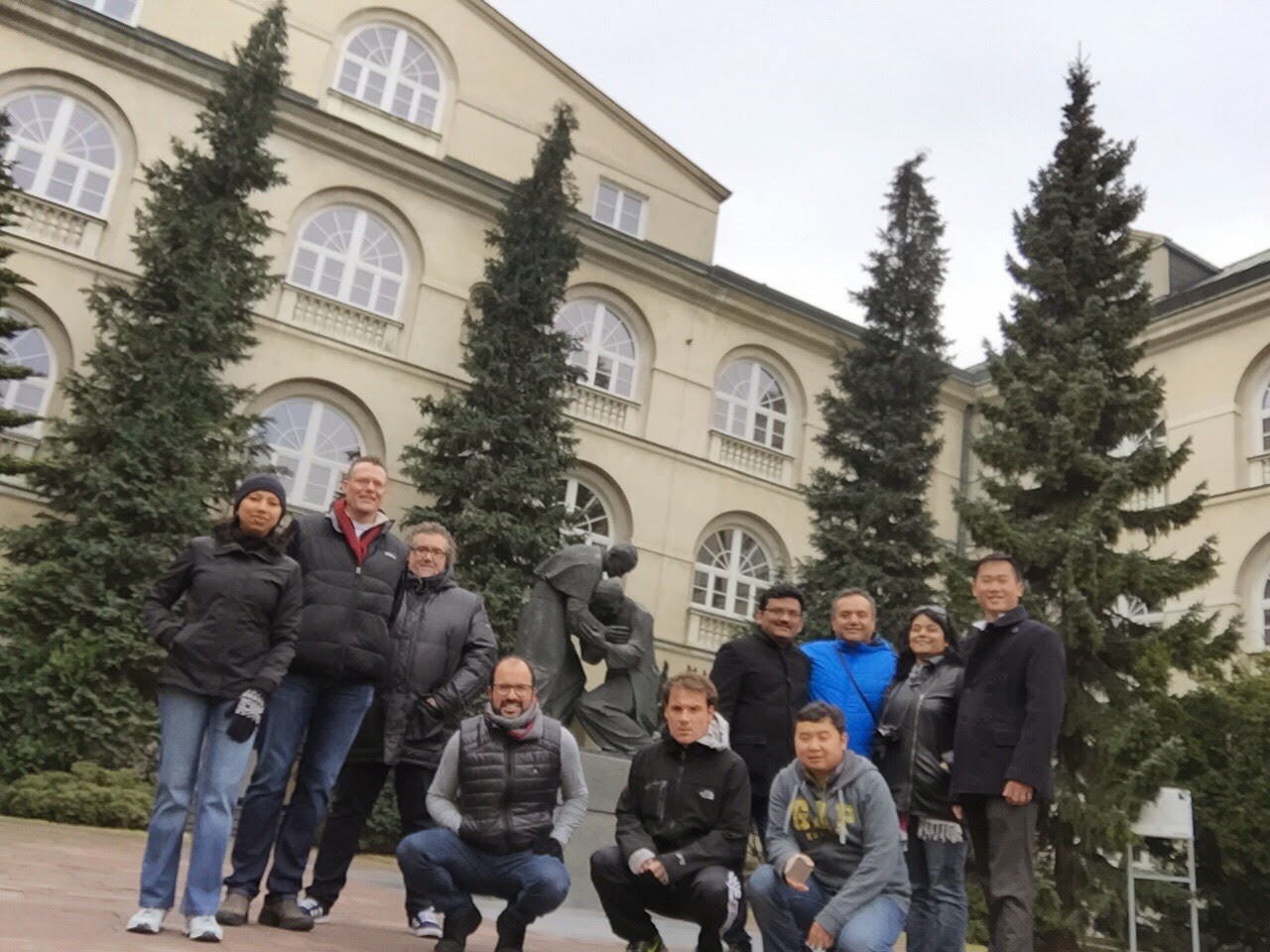Truth be told, most of the larger team had grand visions to travel to Krakow (4 hours away) and Zakopane (1 hour south of Krakow) this weekend, however the week went by so quickly and was so busy with project work that we were not able to make hotel and car reservations before the weekend was upon us. Not bad, this will give us a chance to explore more of Lublin.
Since our client IS the City of Lublin, we were outfitted with a lot of information about the city, and plenty of things to do. As you can see from earlier posts, we have taken full advantage! One of the resources we each received was a book titled "The Trails of Lublin", which details five (5) walking trails around the city. So on Saturday of this weekend, shortly after breakfast, the team started with a walk, a long walk, entitled "The Trail of Famous Lubliners".
As you can see the walk takes us past locations, mainly in the Old City, associated with the life and work of Lubliners who helped shape the history of this city. Below are some of my favorite pictures from the walk.
 |
| Teammate Calixto doing some maintenance work on the plaque for Kazimiera Wolowska |
This group of people was not listed in the Famous Lubliner's trail, however Litewski Place where these monuments are located was very close to our Hotel. These were soldiers who not only fought against the Germans during WWII, but then became famous and remembered for their organized resistance against the Soviets in occupied Poland after WWII. Most were executed in prisons 1950-1960.
(Updated 4/3/15 - Thank you KG for the clarification)
And what walk is
 complete
without a stop at a nice restaurant for a leisurely lunch? So, the
team meandered into Trybunalska, a restaurant recommended by one of our
client representatives, and enjoyed another fine Polish
complete
without a stop at a nice restaurant for a leisurely lunch? So, the
team meandered into Trybunalska, a restaurant recommended by one of our
client representatives, and enjoyed another fine Polish  meal. Pictured below left is our teammate from France, who was elected to select the wine.
meal. Pictured below left is our teammate from France, who was elected to select the wine.

My entree was salmon on top of spinach and whipped potatoes, and dessert was lemon tart with with walnut ice cream. This ended up being our most expensive meal yet at 75ZL each. If you do the conversion this comes out to under $20US.
After lunch some of the team members returned to the hotel, while the rest of us completed the "Trail of Famous Lubliners". We did the trail in reverse order, so our last stop took us very near the Lublin Castle, which is actually stop #1 in the guide.
Sunday
On Sunday, the team traveled by bus to the outskirts of Lublin to Majdanek. This was one of the Nazi concentration camps during the Holocaust. I will prepare you now, the remainder of this post is very heavy, and all that I am writing about is very disturbing. I considered not posting anything about this stop in my journey, but as I thought about it more I think this is a place ALL should see, as a respect to the victims of this tragedy, and a reminder of what happened.
The historical events I am revisiting on this day are what I would consider the darkest, most unimaginable human tragedies in world history. If you have studied events from World War II, or the Holocaust, you know that from 1941- 1945 approximately 11 million people (about 6 million Jews, and about 5 Million Non-Jews) were murdered by Nazi German soldiers.
Majdanek, which was just one of about 40,000 facilities in the network that carried out the operation of this atrocity, stands today as a museum. At the entrance to the former concentration camp are large Hebrew letters that translate to "Lublin".
All of the buildings at Majdanek are the original structures as they were when the camp was in operation.
Majdanek started as a labor camp during World War II to house about 150,000 prisoners of war.
In September of 1942, gas chambers began operating as part of the "Nazi Final Decision" to eliminate all Jews.
In an attempt to cover up the crime the bodies were burned in the crematorium.
A large monument was constructed around the pile of ashes of the victims . It is one thing to read about the events that took place during that time, that is really not that long ago; it is a much different experience to see the place where this happened. Unimaginable is the best word I can find to describe what I experienced this day.















Thanks for your blog posts on IBM Team visiting Lulin!
ReplyDeleteI'd like to comment pictures of soldiers on the Litewski Place. They of course have been fighting against Germans during WWII, but they are famous and remembered of fighting against Soviets in occupied Poland after the WWII, then executed in prisons mostly in 1950-1960.